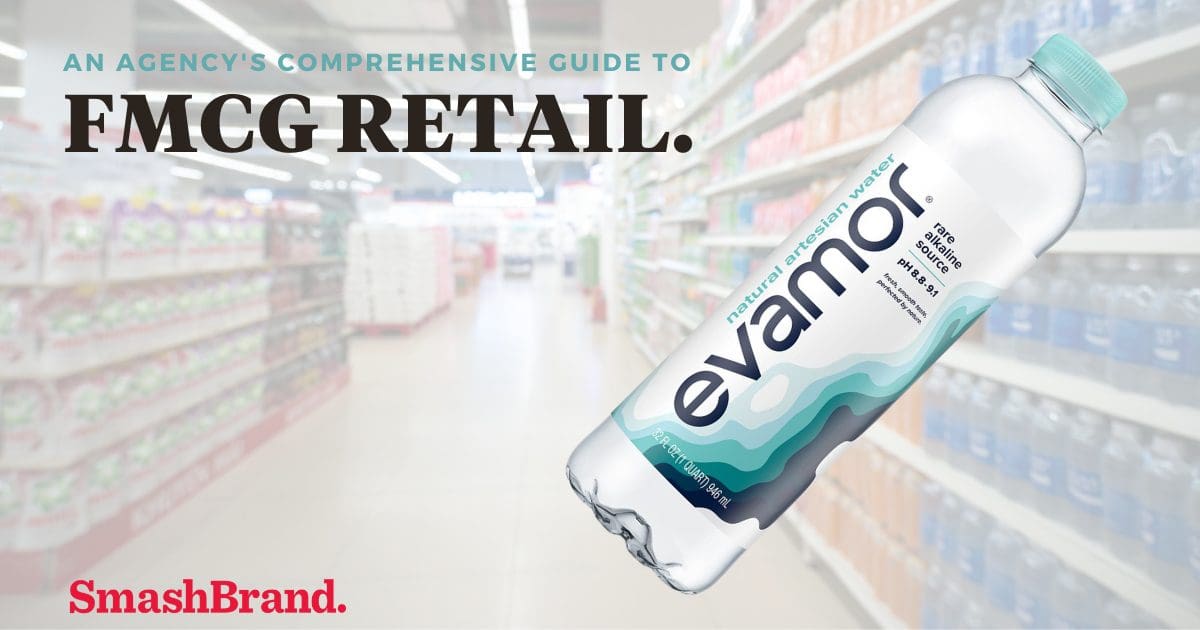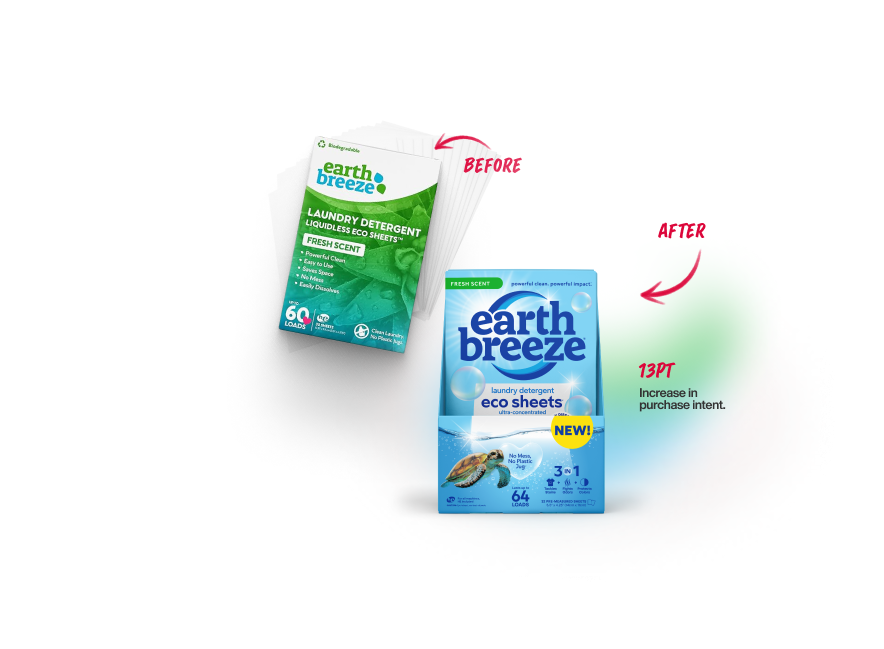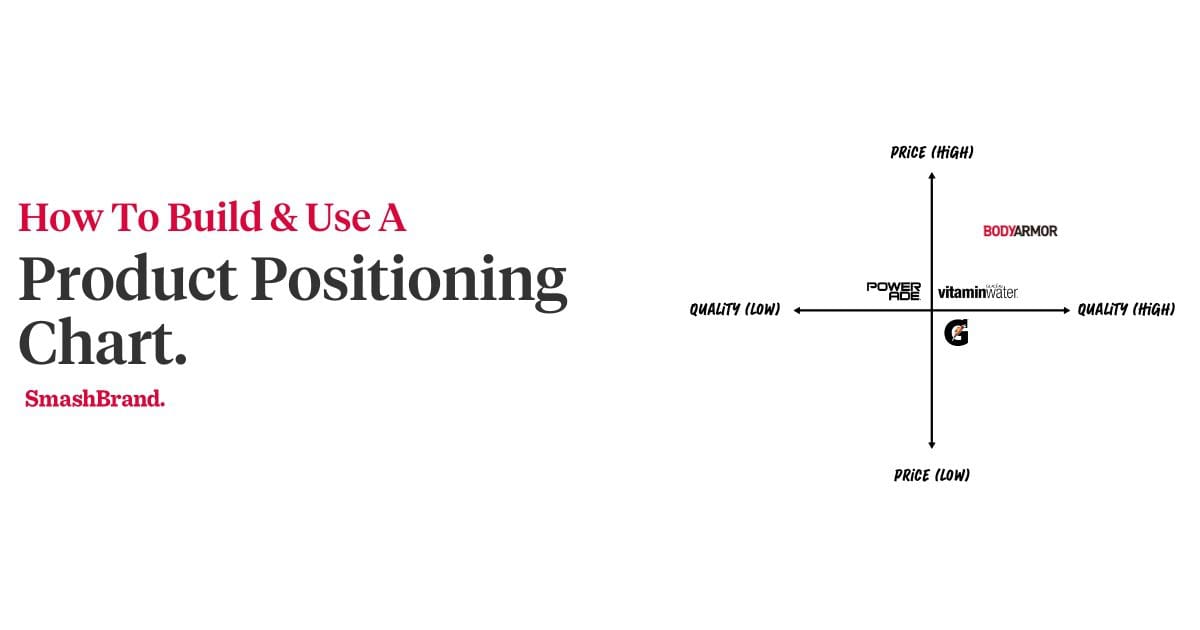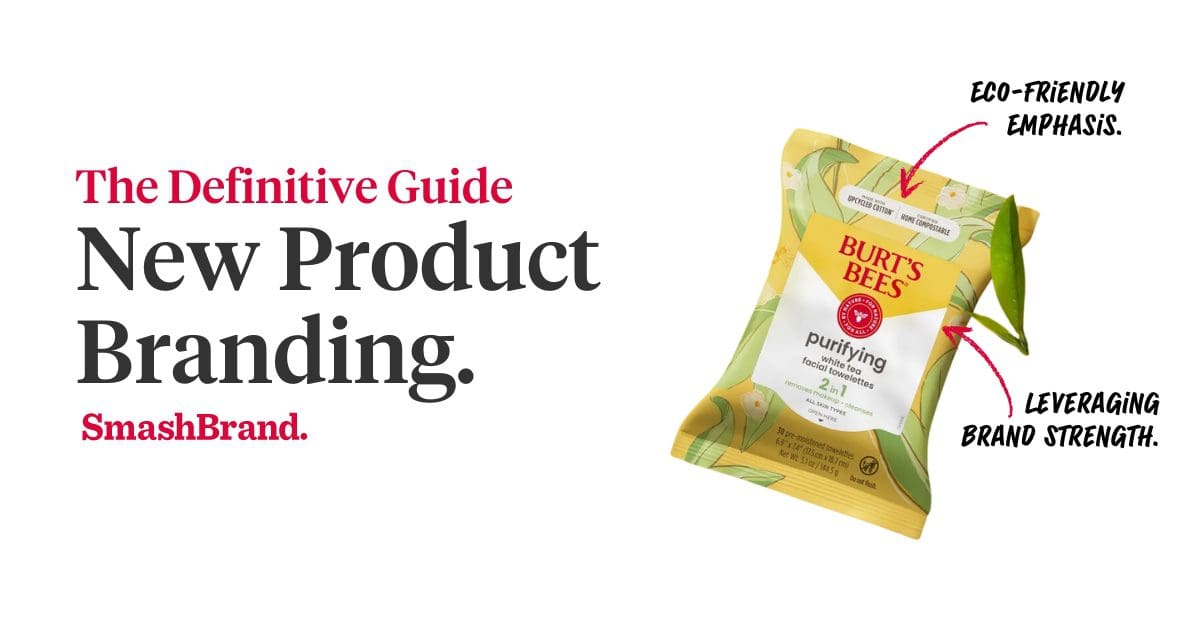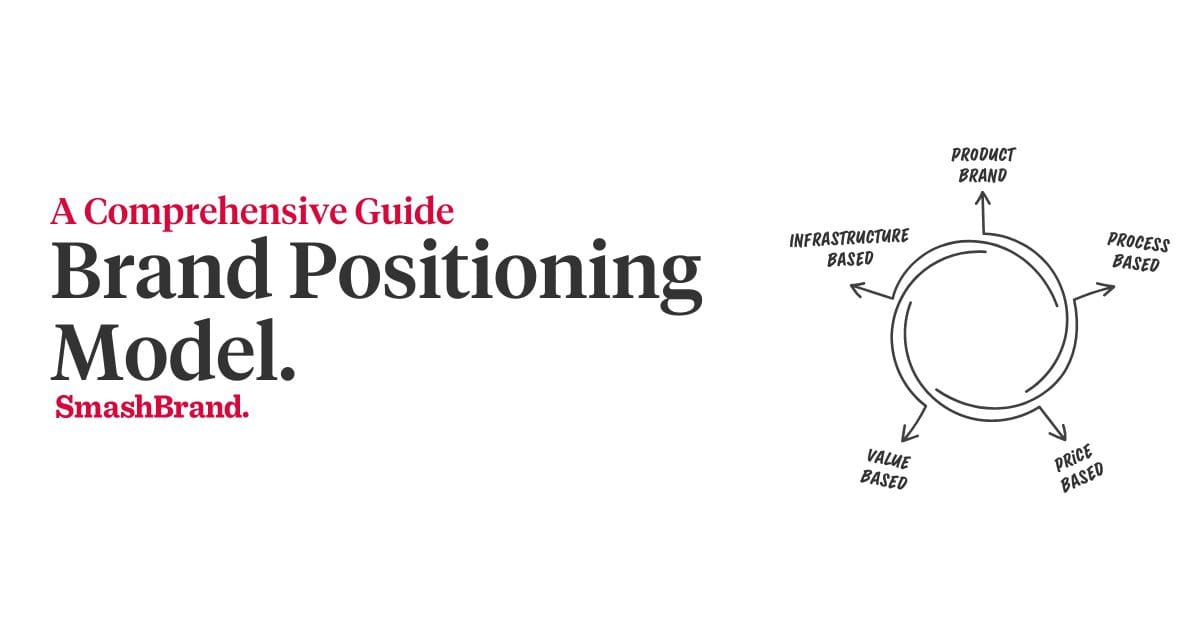Listen to This Article


As the fast-moving consumer goods (FMCG) sector continues to grow and evolve, it’s more important than ever for brands to have a solid understanding of what it takes to compete in the hyper-competitive FMCG retail space.
Understanding and navigating the retail landscape can be challenging, with many brands and products competing for consumer attention.
In this guide, we’ll explore the key factors brands must consider when working with FMCG retailers, from understanding consumer behavior to developing effective marketing strategies.
Whether you’re a founder or brand manager, this guide will provide valuable insights into FMCG retail, helping you succeed in this dynamic industry.
So, let’s begin your journey to becoming an FMCG retail expert!
Also, read! CPG vs. FMCG
Get your Hands on the SmashReport!
And enter to win a FREE brand diagnosis worth $20,000.
*The SmashReport is a monthly newsletter for FMCG and CPG brands, helping them stand out in the competitive retail marketplace.
Understanding the FMCG Market
The fast-moving consumer goods is a vast market that covers a wide range of products, including food and beverages, personal care products, household care, and other FMCG categories like automotive and electronics.
It is a highly competitive market due to its extensive product coverage. Therefore, retailers operating in this industry must understand the market deeply to sustain their business and incrementally grow profits over time.
Below are a few essential factors to help you understand the complex and challenging FMCG market:
FMCG Market Trends
To better understand the FMCG market, analyzing the market trends is essential. By doing so, FMCG brands can launch products tailored to the specific target market, increasing brand loyalty and sales.
Staying informed about FMCG market trends is necessary for comprehending the market dynamics and gaining valuable insights into consumer behavior, preferences, and demands.
FMCG retailers and agencies can outperform their competitors by keeping up-to-date with the latest trends and creating effective strategies that cater to customer needs and expectations.
Market insights into trends is not a one-time expense. Brands should regularly invest in consumer insights to ensure they stay caught up to any changes in preference and behavior for their category. Brands can work with an FMCG brand development agency to find new marketing opportunities and generate more sales.
Understanding the Target Audience
Understanding the target audience is critical for FMCG brands selling in retail who seek to understand their ideal customer in the market.
Targeted FMCG market research involves developing a deep understanding of the demographic, psychographic, and behavioral characteristics of the consumers who are most likely to purchase their products.
Understanding the target audience allows an FMCG Agency to customize marketing strategies and product offerings to cater to customers’ needs and preferences. Target market research identifies opportunities for competitive distinction, helping to foster brand loyalty.
For example, let’s look at the target audience for health-conscious consumers. In that case, FMCG brands can research and develop distinct ways to improve health based on their current audience and where they hope to be.
Similarly, if the target audience is Gen Alpha consumers, FMCG brands may focus on developing innovative, trendy, and convenient products where the packaging design accentuates their style and culture.
Identifying Competitors
By analyzing the competitive landscape, retail brands can gain insights into the strengths and weaknesses of their competitors, as well as identify potential threats and opportunities.
One of the primary benefits of identifying competitors is that it helps retailers to differentiate their products and services from those of their competitors.
At SmashBrand, we execute an in-store competitive audit and deep research into the competitor’s current positioning and messaging to identify gaps in the market where our clients can stand out on the shelf. The competitive analysis frees up the innovation process for FMCG brands.
By understanding what their competitors offer, retail brands can develop unique selling propositions, distinct messaging, and FMCG marketing strategies that set them apart. This distinction builds consumer trust, and while going narrow with your targeting may sound limiting, statistically, it captures more market share over time.
In addition, a detailed competitor analysis will also help an FMCG brand strategy agency improve its branding to match the market needs.
By monitoring their competitors’ strategies and product offerings, retailers can identify new opportunities for growth and expansion and potential threats to their business.
Customer Behavior and Buying Patterns in FMCG Retail
Lastly, learning about customer experience and buying patterns in FMCG retail is critical for your internal team or the FMCG branding agency conducting the research. By carefully analyzing the factors that influence consumers purchasing decisions, brands can easily tailor their marketing and branding strategies.
It can unlock new doors to profit and sales by fulfilling the market’s needs. One significant benefit of understanding consumer behavior and buying patterns is that marketers can identify the key FMCG trends.
With this data, marketing agencies can easily understand what consumer goods work best and when & where are mostly consumer making purchases. Apart from that, these powerful insights can also help identify the factors influencing the decision-making process.
Developing an FMCG Retail Strategy
As previously stated, the FMCG industry is highly competitive and requires thorough market research and effective strategies for successful business operations.
After carrying out detailed FMCG market research, here are the steps to developing an effective strategy to run a successful FMCG company:
Product Innovation
In today’s fast-paced market, product innovation is crucial to surviving huge competition and standing out as a successful brand.
FMCG brands must prioritize product innovation to stay ahead of the competition and meet their target audience’s constantly evolving needs and preferences.
Innovation is differentiation, helping distinguish products from their competitors. For example, an FMCG retailer might have multiple ice cream brands. However, only the one with innovative package design, unique flavors, and strategic pricing will gain more customers.
If they all “appear” to sell the same thing, brand loyalty fails, and no one wins. Product innovation also helps introduce consumer products that meet the evolving needs of their target audience.
Here’s a wild example, a brand targeting the food market may introduce an edible spoon, which can help reduce environmental pollution. Such a product is more likely to stand out in the market, and everyone will admire it.
Sustainable and Socially Responsible
Sustainability and social responsibility have become increasingly important considerations for FMCG retailers. Since consumers are becoming aware of their product’s environmental and social impact, so they want to support retailers that share their values.
A sustainable and socially responsible FMCG product will likely win the market. It helps engage the customer from a different angle rather than just a conventional marketing approach.
Developing a sustainable and socially responsible FMCG retail strategy also involves significant considerations. The primary area of focus is product design and development.
Retailers must consider the environmental impact of their products throughout their lifecycle. It covers everything from sourcing raw materials to disposal at the end of their useful life.
FMCG Retail Packaging Design
Retail packaging design is another critical aspect of a successful FMCG retail strategy. A good FMCG packaging design can help solve many brand distinction problems.
Therefore, an FMCG packaging design agency must focus on carefully creating product packages tailored to the specific target market, testing to determine how each element of the package plays out with consumers.
A good product package design is not limited to choosing the right fonts, colors, and imagery. It must convey the company’s visual and verbal message to the target audience.
An ice cream package highlighting its richness, organic ingredients, and health benefits will likely appeal more to health-conscious customers than a standard package.
Choosing A Retail Channel(s)
Successful marketing and FMCG branding campaigns are necessary for brand awareness and gaining traction in the market. However, choosing the right retail channel is the backbone of FMCG retail strategy.
Conventionally products are sold in markets. However, the retail channels have increased with the advent of new technologies. The internet has helped markers to reach their customers across the globe via ecommerce stores and social media.
Selecting the proper retail channels helps FMCG companies stay connected with their target audience at numerous touchpoints. It also allows FMCG retailers to reach more customers. That said, extensive research is required when choosing the best retailer channels for your brand.
For example, Almost every FMCG product sells online through DTC, with more people needing a physical location to connect with the product truly. Most customers like to feel and touch the product before making a final decision. So how do we take an omnichannel approach where there is synergy between online and offline channels?
An exemplary FMCG retail company first understands the target market and its product’s nature. After that, it chooses the most fitting channels to help the product reach its target audience.
An excellent example of it can be perfume and deodorants. No matter how much marketing a brand does, they can only make a purchase decision after trying and testing the product first instead of its name, packaging, and brand value if the customer tries and smells it. So the habitual nature will occur in-store vs. online.
Creating A Unique Selling Proposition
Creating a unique selling proposition is necessary for an FMCG brand trying to survive in a competitive market. FMCG retailers can differentiate themselves by offering unique product features allowing them to stay ahead of their competitors.
For example, an MCT Oil product may offer a unique pour spout preventing the dreaded spills.
We’ve stated this before, but it’s worth saying again. Emphasizing sustainable practices can be a key USP for FMCG brands. Such methods involve introducing eco-friendly packages, sourcing sustainable raw materials, and minimizing carbon emissions throughout the FMCG supply chain.
Pricing & Promotion Strategies
Pricing and promotion strategies are crucial in achieving success when developing a retail strategy for Fast Moving Consumer Goods.
One pricing strategy retailers often use offering promotions on FMCG products. Deals can attract price-sensitive consumers, who are always looking for a bargain, to the store.
Promotions can lead to more shelf awareness, which benefits the retailer, making them further satisfied with your brand. However, discounts can also impact the retail margin on FMCG products, which is the difference between the cost of goods sold and the selling price. Promotional offerings can be a slippery slope.
If the discount is too steep, the gross margin on the product can fall below the point of profitability, requiring a longer ramp to profitability.
On the other hand, promotion strategies can also effectively drive sales of FMCG products. For instance, retailers can offer a “buy-one-get-one-free” promotion or a “spend-X-amount-and-get-a-free-product” promotion.
These promotions can incentivize consumers to purchase more items, increasing the average transaction value and driving higher sales volume.
Retailers must balance pricing and promotion strategies to achieve their desired sales and profitability targets.
Also read: FMCG pricing strategy.
Merchandising
Merchandising plays a vital role in the success of an FMCG retail strategy. It involves planning, selecting, and placing products to maximize sales and enhance the overall shopping experience for consumers.
In other words, FMCG merchandising is about creating an attractive and engaging shopping environment that encourages customers to purchase.
Retail marketing, which includes merchandising, is essential for FMCG companies for several reasons.
First, FMCG products are often purchased impulsively, meaning how they are displayed in-store can significantly impact sales.
A well-executed merchandising plan can make FMCG products stand out on shelves and catch shoppers’ attention, increasing sales.
Secondly, strategic retail placement can help FMCG companies differentiate their products from competitors simply by being seen in a new light. With so many similar products on the market, it can take time for FMCG companies to stand out.
Effective merchandising can highlight a product’s unique features and benefits, making it more appealing to consumers.
Thirdly, In-store (paid) product positioning can help FMCG companies build brand awareness and loyalty.
By creating a visually appealing and engaging shopping environment, FMCG companies can increase the likelihood that customers will remember their brand and return to purchase more products.
Supply Chain
In the fast-paced FMCG industry, supply chain management is essential to ensure that brands deliver their products to retailers on time and in the right quantities.
Efficient supply chain management can help FMCG companies meet consumer demand, reduce costs, and improve profitability.
One key aspect of supply chain management in the FMCG sector is inventory management. Effective inventory management is critical to ensure that products are available when customers want to purchase them.
Consumer demand can be highly variable and difficult to predict. Therefore, it is essential to carefully manage inventory levels to prevent stockouts and overstocking of the products.
As FMCG companies expand their operations and introduce new products, the supply chain must be able to support growth. Surviving the growth curve withy your supply chain includes ensuring that production facilities meet demand, efficient distribution networks, and scalable inventory management systems.
Digital Marketing
In today’s world, digital marketing remains a powerful method of communication with consumers; bluntly speaking, most brands fail to take advantage of what’s possible in digital marketing.
We live in a connected world, and digital marketing helps in-store and online revenues reach the right target audience without wasting too many resources. There are multiple digital marketing tactics that FMCG brands use to maintain their online presence.
For example, a snack and food business will use the power of search engine optimization (SEO) to reach its target audience before its competitors and dominate the market. The snack company can create unique recipes offering an alternative use to their snacks and cover topics surrounding their snacks, such as “what to pack in your kid’s lunch.”
Social media presence is another necessity for brands these days. For example, 463 million people use Pinterest and no doubt this social channel influences them.
Social media marketing still has enormous potential for generating more sales and revenue. However, like retail channels, we should carefully select media channels to ensure you can master one before moving on to the next.
According to statistics, 80% of the audience on Pinterest is females, which means companies targeting women’s fashion and personal care can benefit from it.
Omnichannel
Going deeper into the topic, integrating various sales channels, including click-and-collect retailers, with your direct-to-customer ecommerce platforms can provide unique data-driven insights that create a triumphant FMCG retail strategy. This is where an omnichannel approach comes into play.
One of the advantages of an omnichannel strategy for FMCG companies is that it can help them reach a more expansive audience but, more importantly, diversify their revenue stream and accelerate the revenues to the point of being in the black. By offering multiple sales channels, FMCG companies can cater to the preferences of different customer segments.
Customers who like to shop in-store can visit physical stores, while those who prefer to shop online can order products from an ecommerce platform.
Implementing the FMCG Retail Strategy
Implementing the right strategy can be a daunting task for many FMCG brands. It is primarily due to the efforts involved in it. However, we can make it simple with a step-by-step approach to implementation.
Let’s examine the different steps in implementing a successful FMCG retail strategy.
Launching the Strategy: It is essential to introduce the strategy to all relevant stakeholders, including employees, suppliers, and customers. A thorough communication plan should accompany the launch of the strategy.
Measuring Success: Once you launch the retail strategy, the next crucial step is to evaluate its performance and determine its level of success. We can achieve this by analyzing the analytics and customer acquisition data from the initial day of the launch. Utilize the following key performance indicators to measure the effectiveness of the FMCG retail strategy.
Analyzing Data and Adjusting the Strategy: Analyzing data from key performance indicators can provide valuable insights into customer behavior and preferences, allowing for the optimization of current strategies to fit the situation better. Advanced technologies such as AI and machine learning can aid in this process.
Staff Training and Development in FMCG Retail: The success of an FMCG retail strategy relies heavily on the quality of the staff executing it. Therefore, investing in the education and training of the team is as important as formulating the strategy itself.
Customer Service and Loyalty Programs in FMCG Retail: FMCG companies should emphasize customer service and loyalty programs to enhance customer loyalty and increase sales. Build loyalty through personalized promotions, exceptional customer service, and loyalty programs that benefit regular customers.
Legal and Regulatory Considerations in FMCG Retail: FMCG companies must consider legal and regulatory factors affecting their retail approach. Legally and regulatory considerations include encompasses adhering to food safety regulations, labor laws, and marketing guidelines.
The Future of Retail FMCG
FMCG retail strategy involves a range of approaches to help companies increase market share, drive growth, and improve profitability.
These strategies typically include pricing and promotion, merchandising, supply chain management, omnichannel sales, and legal and regulatory compliance.
It’s essential to evaluate and adapt strategies to remain competitive continuously. Here’s a short list to remember:
- Forecast market trends.
- Monitor consumer insights.
- Analyze data to identify areas for improvement.
Companies should also focus on developing innovative products, building strong brand identities, and prioritizing customer satisfaction to remain competitive in the consumer goods industry.
It’s also essential to stay up-to-date on technological trends and to be willing to adapt to changing market conditions.
The COVID-19 pandemic has significantly affected retail for fast-moving consumer goods brands, accelerating trends such as FMCG ecommerce and changing consumer preferences.
Companies should adapt by investing in digital capabilities, prioritizing customer safety and convenience, and utilizing data analytics to understand consumer behavior.
Data-Driven Brand Development
Want a best-selling brand? SmashBrand is a brand development agency for CPG and FMCG companies. From brand strategy to packaging design testing, our Path To Performance™ process guarantees a retail performance lift. Book a time to discuss your project with our team.

